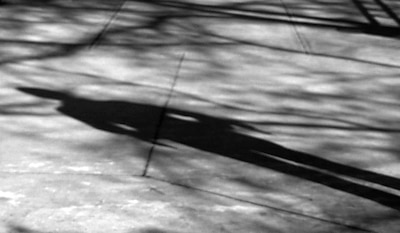
Editor’s note: This story was reported and written by the Rocky Mountain Investigative News Network. Read about the reporting team here.
And read sidebar on rape prevention strategies here.
In the fall of 2008, University of Colorado students who’d sought help from the school’s Office of Victim Assistance told counselors they’d been the targets of date-rape drugs used at the same fraternity in Boulder.
“There was definitely a pattern of women being drugged at a particular fraternity,” said Davian Gagne, who leads gender violence prevention at the office.
But the school’s therapists said they are barred from telling police or anyone else any details about the alleged crimes – which have never been publicly acknowledged until now.
Neither the university nor the police could investigate “because we didn’t tell them” the name of the fraternity, said CU Victim Assistance director Mary Friedrichs. “And we can’t.”
Friedrichs said state law, and the therapists’ code of ethics, prevent her from giving police or the public the details of the alleged crimes. And the university has no jurisdiction over the fraternities because they are not officially part of the school.
The law and the ethics code say all licensed therapists must keep what clients tell them confidential, unless the client wants that information shared. If therapists had to disclose details of a sexual assault to police, Friedrichs said, then victims might never come forward.
“It’s not that we want perpetrators to get away with it,” Friedrichs said.
But law enforcement officials say that’s exactly what could happen if CU and other schools across the state – and the nation – don’t find a way to both protect victims and prosecute criminals.“That becomes a real problem,” said Boulder District Attorney Stan Garnett. “It’s frankly up in the air how we will resolve this.”
An “epidemic” of campus sexual assault
Across Colorado – and nationwide – counselors and police officials are conflicted over how to both protect the victims of sexual assault and prevent more people from becoming victims. The tension is emerging amid major changes in the way universities in Colorado and elsewhere try to prevent sexual assault and how they publicly report crime on campus.
All this is happening in the context of what some experts call an “epidemic” of sexual assault on campus. The U.S. Department of Justice estimates that one in 28 college women is the target of rape each school year, and that eventually, one in five women is the victim of a sexual assault or attempted sexual assault during her college years. Only one in 20 ever reports the crime.
An investigation of sexual assault on college campuses in Colorado found that across the state, the number of assaults that colleges reveal to the public is often just a fraction of those that are known to campus officials.
Federal law requires each college that receives federal aid to report to the public the number of sexual assaults and other serious crimes on campus. This is called the Clery Report.
But at three of Colorado’s largest universities, counselors report neither details nor the aggregated number of alleged sexual assaults they learn about from clients.
The most recent data show:
- The University of Northern Colorado in Greeley reported four sexual assaults, but school officials knew of more than twice that many.
- Colorado State University in Fort Collins reported two sexual assaults, but knew of at least three times more than that.
- CU reported 9 sexual assaults, but officials there say about two dozen more students reported recent sexual assaults to school therapists. It is not clear how many of those assaults may have occurred off-campus.
So because the majority of victims go to counselors instead of police, the crimes against those students remain hidden – unless the victims themselves tell police.
This is not true at all colleges. For example, at Colorado College in Colorado Springs, the number of sexual assaults listed each year in its public report includes both those seeking assistance from counselors and reporting directly to police.
At other schools, there is often confusion over who is supposed to report what.
“We operate in terms of confidentiality in Colorado like therapists, but we are not therapists,” said Lisa Ingarfield of the Phoenix Center of Auraria, which serves students from the University of Colorado at Denver, Metropolitan State College of Denver and the Community College of Denver. “And so that, I think, is where the confusion comes in about whether or not we have to report.”
“A woman was raped here”
The CU case highlights the potential consequences when suspected crimes go unreported, and suggests that more attention is needed, said Joanne Belknap, a CU sociology professor who studies sexual violence.
For Belknap, the conflict over reporting is a personal one.
In the late summer of 1980, when Belknap was a senior at CU, she stood in front of the iconic Old Main building on campus, staring down at the outline of a body drawn on the sidewalk. Next to the outline were these words: “A woman was raped here.”
That woman was Belknap.

And though she had fought off her attacker before he could rape her, the sexual assault left her beaten and fearful. She had been hesitant to contact police. But her father did call police, and Belknap said a women’s rights group had apparently noticed the police report and drawn the outline to mark the scene of the crime.
“It made me feel validated in this way that nothing else had,” Belknap said. “I felt like, oh, somewhere this counted for something.”
So while the idea of making a police report might discourage some victims from coming forward, Belknap has found that the reports of others also sometimes help victims decide to make a report themselves – holding the same power as that outline she saw on the sidewalk.
Heather Horton also has seen the strength behind the numbers. As director of the Sexual Assault Response and Prevention office at Colorado College, she produces a public report each year on the number and nature of all sexual assaults involving students.
“I have had a few times where somebody saw the report and that’s part of what prompted them to come in and talk with me about their own experience,” Horton said.
Erin Jemison, director of the Colorado Coalition Against Sexual Assault, agreed.
“One of the most healing things I’ve seen with a victim of sexual assault is when they realize that they are one of many,” she said, adding that victims then realize: “If this is happening to this many people, it’s not some specific thing that I did to make this happen.”
The U.S. Justice Department is about to launch a training program for college victim assistance officials. Already, at least one college in Colorado – the University of Northern Colorado – has decided its victim assistance office will begin adding its tally of sexual assault cases to what’s reported publicly, which is known as the Clery Report.
“Any time this crime remains hidden, then everyone else has no idea it happened – and then it can happen again,” said Sally Miller, Deputy Chief of Police at Sonoma State University near San Francisco, who is helping develop the curriculum.
The training will recommend that victim assistance officials use an anonymous form to report details of an alleged crime to police officials.
CU has such a form. It can be found on the campus police Web site. But campus police spokesman and commander, Tim McGraw, said no one has ever used it.
“We’ve had it up for five or six or seven years,” McGraw said, adding that officials across campus know about the form because the campus police do training and distribute information about it. Campus police have another form for anonymously reporting crime on campus, which has been used by victims.
Friedrichs says even if she encouraged her clients to fill out the anonymous form, it wouldn’t be helpful to police because they would still not have a witness to the crime.
Garnett, the district attorney, said law enforcement officials would, indeed, want to find any witnesses to the crime. But some information – even anonymous information – is better than none at all, he said.
“It could be a start,” Garnett said, adding that law enforcement could approach the case in the same way they might begin to investigate a drug ring or a gang.
An unnamed fraternity
For now, Friedrichs said she can’t reveal the name of the fraternity in question, or even say how many students reported they were victims of date-rape drug use there, though she says it was a small number. She said she has not reviewed her records to check how many reports have involved the unnamed fraternity, nor does she plan to.
That leaves law enforcement frustrated.
“If it’s confidential, law enforcement doesn’t know the extent of the problem,” Garnett said. “If we have a situation where there’s a belief that a particular fraternity or group of people may be engaging in a pattern of criminal behavior, that would be something we very much would be interested in investigating.”
Both sides are keenly aware of the stakes.
“This is a public health issue,” Friedrichs said. “It touches us all. Sexual assault is a very harmful thing. The trauma is deep and long – life-long. And it can be transmitted to future generations. The culture spends so much money on the impacts. All of us are impacted.”
After learning about the alleged predatory drugging, Garnett said he would bring up the issue in ongoing discussions with university officials about confidentiality.
Miller, the Justice Department trainer, says colleges and law enforcement must find a way to protect victims and prosecute criminals.
“Too many times, it’s just extremes,” Miller said. “One side says: You’ve got to report everything so no one else has to go through it. The other side says: Nothing should ever be reported unless the victim wants it. I tell people you have to have a balance. Come to the middle. How can we get the most information out to help the most people?”
***********
Public Reports
Many colleges in the U.S. did not report serious crime on campus at all until Congress began requiring it in 1990. Four years earlier, Jeanne Clery, a freshman at Lehigh University in Bethlehem, Penn., was raped, tortured and murdered in her dorm room.
Clery’s attacker entered her dorm through a series of three doors that had been propped open. Clery’s parents became convinced that if students had known about the 38 violent crimes on campus in the three years before their daughter’s murder, those doors would have been locked. They led a campaign to require campuses to report serious crime to the public, which became the federal Clery Act.
The Clery Act requires colleges that receive federal funding to collect and publish the number of serious crimes – including sexual assault – that occur on their campuses or immediately adjacent to them each year.
*********
Secrecy Under the Law
Colorado law prevents therapists from disclosing information without their client’s consent – even if that information might help police stop ongoing crime.
That’s different from similar confidentiality laws. Lawyers, for example, must keep their client’s information secret. But if that information could prevent a serious crime, the lawyer can breech confidentiality, said John Sleeman, managing senior associate general counsel for the University of Colorado at Boulder.
But state lawmakers could change that.
“It’s within the legislature’s perogative to decide to broaden the circumstances under which therapists could breech confidentiality without patient consent,” Sleeman said.
There are already some exceptions to the Colorado law that bars therapists from disclosing what their client’s tell them. Those include:
- A client is threatening serious harm to a specific person or themselves.
- Abuse of a child.
- Unethical behavior by another therapist.
